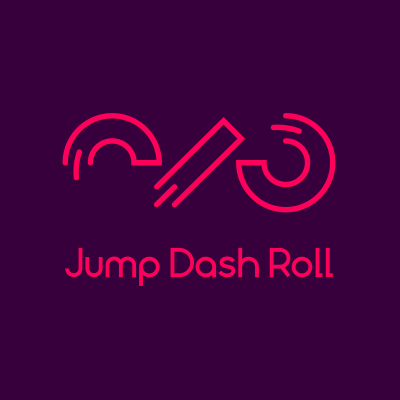When listing the greatest indie games of the last decade, you’ll always find Cuphead nestled alongside smash hits like Fez, Undertale, and Shovel Knight. In the years since Cuphead’s 2017 introduction it has graced Xbox, Windows, Mac, Switch, and even Tesla platforms — which makes the sudden launch of a PS4 port for Studio MDHR’s bullet hell boss battler welcome news for anyone yet to take on the notoriously tough title. It’s a release which makes perfect sense (as if it didn’t before), with Netflix’s forthcoming animated series looking to reach as wide an audience as possible — so whilst there isn’t anything new here to differentiate itself from the main other versions of the game, this edition perfectly retains the full experience with slick gameplay, gorgeous presentation, and lightning-fast loading screens.
For those unfamiliar, you’ll be assuming the role of either the titular Cuphead or his brother Mugman as you fire your finger guns frantically at all manner of bombastic bosses over twenty-plus levels. Lovingly hand-drawn in the 1930s ‘Golden Age’ animation style which brought us the likes of Betty Boop and Oswald the Rabbit, each setting is distinct, dripping with humour, and overflowing with a surreal imagination. Holding down the fire button is the first order of the day, but you’ll need to master your jumps and dashes to avoid a bombardment of projectiles — from a carrot’s psychic mind waves, to a genie’s floating cat statues, there’s rarely an in-game moment that you aren’t being kept off balance by some (increasingly peculiar) attack.

Unique to Cuphead is an aerial ‘parry’ move which bounces you off pink coloured objects to earn a charged shot. These special moves appear as playing cards in your HUD, and stacking a few up lets you exchange them for a ‘super move’ with greater damage output. Purchasing upgrades from a shop on the world map can expand your base abilities with more powerful bullets, extra health, or improved dodging. As each boss will employ different tactics, careful sizing of these power ups is essential for progressing through Cuphead — a wider-spread shot is useful for getting up close and personal, but you may want to opt for a weaker homing bullet when the screen is crammed full of killable underlings.
These battles can be completed in just a few minutes apiece, but even on the easier difficulty setting, that final victory will often be the result of many deaths as you learn your opponents’ attack patterns and tells. Each fight is made up of different phases, the boss’s form transforming when the damage you’ve dealt has reached a certain amount, and new obstacles and different hit boxes are thrown into the mix. Cuphead ensures that you’ll never get complacent with this traditional structure however, as each new section randomises the attack patterns (and even their frequency) each time you restart. Sheer bad luck will occasionally generate a near-impossible onscreen onslaught, but thanks to Cuphead’s immediate restarts from the death screen, you won’t be crying over your own spilled milk for too long. Games known for their tricky difficulty can find it difficult to coax in new players if your (many, many) deaths are met with a lengthy loading screen before you can try again, and fortunately Cuphead avoids that pitfall entirely. Quick and easy restarts means you are back in the action in a flash, hopefully having learned from your latest fatal mistake.

Fleshing out the boss battles are more straightforward run-and-gun stages with constantly spawning enemies. Less thought has gone into these than the main event boss battles, but new inclusions on later stages — such as gravity-flipping switches — mix up the gameplay somewhat. Once you’ve collected the coins and beaten the levels, there’s little reason to replay these stages (unless you’re after an elusive ‘Pacifist’ achievement, which means making it to the exit without killing a single enemy). As a palette cleanser from the main game, they’re a fine aside, but definitely the weakest part of the Cuphead gameplay experience.
An aspect of Cuphead which doesn’t wear thin, however, is the presentation. A treat for eyes and ears — from Cuphead’s own bouncing idle animations to the pitch-perfect ragtime soundtrack from composer Kristofer Maddigan. Three years on from an initial release, a direct port of a less-stylised game may be starting to show some age, but Cuphead’s hand-drawn graphics are as crisp and engaging as ever. With Cuphead paying such homage to pre-Code era animation, the character designs and locations are so much more adventurous than anything the House of Mouse would be comfortable putting their name to nowadays. Gambling, drinking, and smoking all play a big part in the Cuphead’s world, and the freedom to explore these dens of iniquity perfectly melds the authentic-feeling art style with a playful subversion of modern sensibilities.

Cuphead is a master class in to-the-point gameplay; easy to learn, but hard to master each challenge it provides across three difficulty settings. Even after dying a dozen times against the same enemy, the charm and warmth it exudes will see you scrambling to retry over and over again. It’s hard to say anything new about such a well-established game, but it’s certainly a treat for the title to finally reach the last of the major platforms and retain such stellar quality.
You can subscribe to Jump Chat Roll on your favourite podcast players including:
Let us know in the comments if you enjoyed this podcast, and if there are any topics you'd like to hear us tackle in future episodes!



.jpg)


